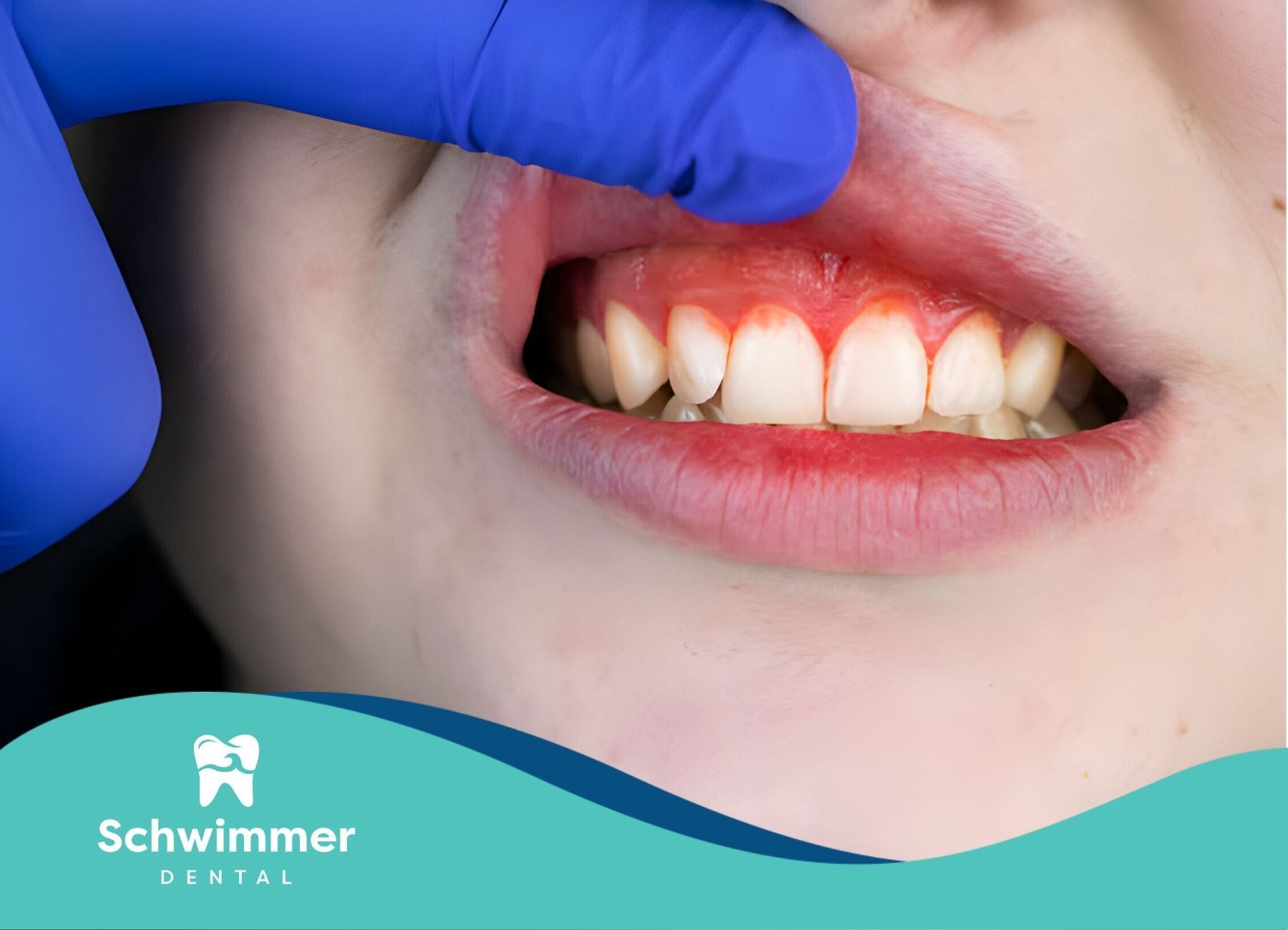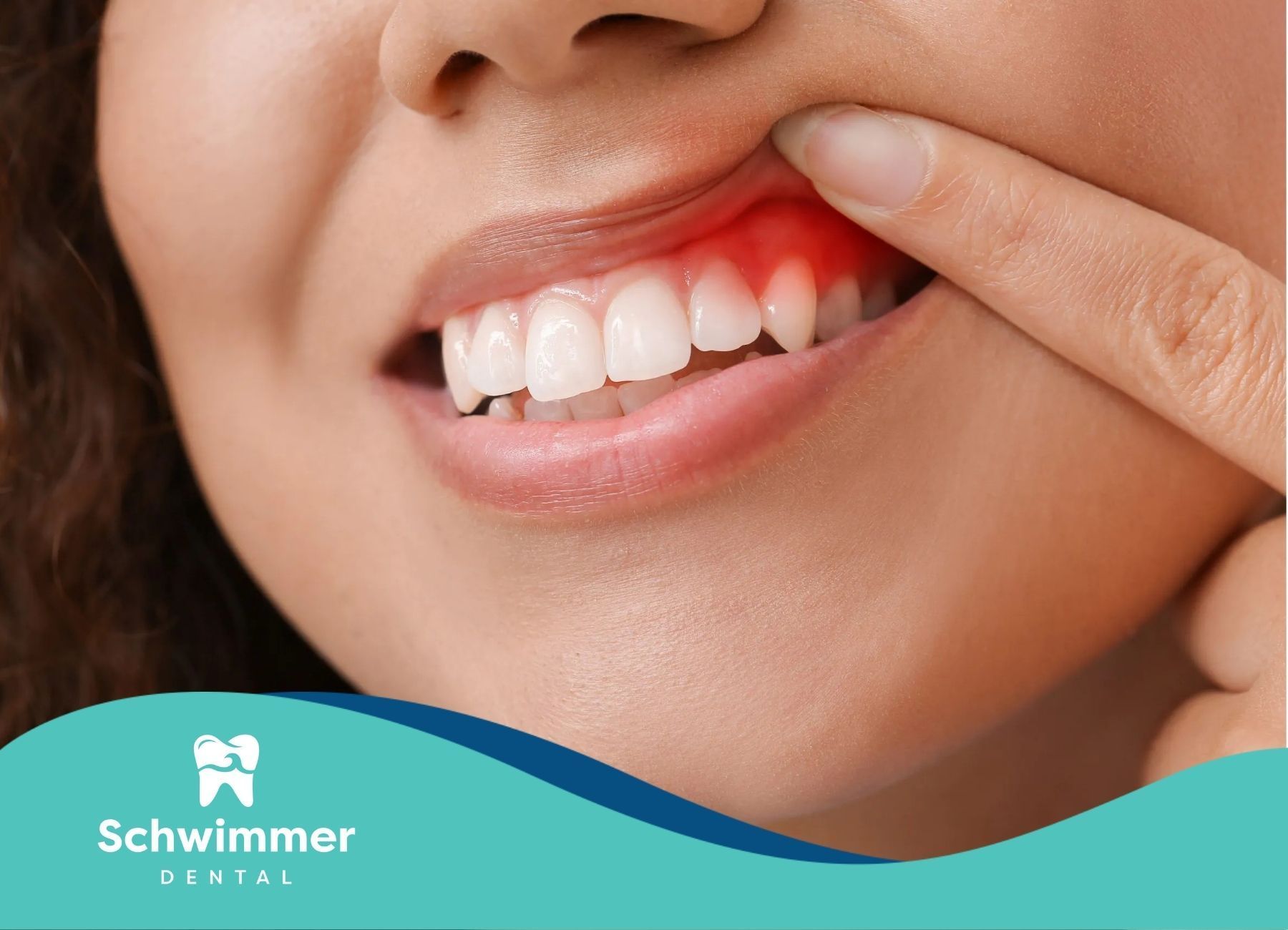Which Is Better: Electric vs. Manual Toothbrushes?
Maintaining good oral hygiene is fundamental for both our oral health and our overall dental health. One of the most frequent questions people ask is whether an electric or manual toothbrush is more effective. While both types help achieve a healthy smile, they both have pros and cons. Let's examine the differences to determine which one aligns better with your oral care needs.
Understanding the Basics of Electric and Manual Toothbrushes
At their core, both electric and manual toothbrushes serve the same primary purpose: removing food particles and dental plaque from our teeth and gums. This process plays a key role in preventing tooth decay and maintaining healthy gum tissue.
The difference lies in their mechanism. Manual toothbrushes depend solely on your brushing technique and effort. On the other hand, electric toothbrushes use automated oscillations, rotations, or vibrations to aid in the cleaning process.
Definition and Types of Electric Toothbrushes
An electric toothbrush, also known as a powered brush or powered toothbrush, cleans teeth through rapid movements of its brush head. Different powered toothbrushes, powered by electricity or batteries, create vibrations or oscillations as their mode of action, that effectively disrupt and remove plaque, a sticky film that accumulates on teeth. These types of toothbrushes began gaining popularity in the early 1960s, leading to advances in dental hygiene.
Electric toothbrushes are available in various types, each with a different mechanism of action:
- Rotating-oscillating toothbrushes feature brush heads that oscillate and rotate in alternating directions, effectively breaking up plaque.
- Sonic toothbrushes utilize sonic vibrations to generate fluid movement that can reach interdental spaces and the gumline.
- Ultrasonic toothbrushes, a higher-end option, operate at extremely high frequencies, essentially shattering plaque with their vibrations.
Definition and Types of Manual Toothbrushes
The humble manual toothbrush, a staple in bathrooms for centuries, relies on the user’s brushing technique. With a handle for grip and a head with bristles, a manual brush requires manual dexterity and effort to effectively clean teeth and remove plaque.
Manual toothbrushes also differ in bristle stiffness, ranging from soft to medium to hard. Soft bristles are generally recommended for most people, as they effectively clean teeth without causing damage to gums or tooth enamel. Hard bristles, while seemingly more powerful, can lead to gingival abrasion and enamel erosion if used incorrectly.
While variations exist, such as angled bristles or contoured heads, the basic design of a manual toothbrush remains consistent. It's this simplicity that contributes to its affordability and accessibility, making it an attractive option for budget-conscious consumers.
Comparing Electric and Manual Toothbrushes
The age-old question of whether to go electric or stick with manual when it comes to toothbrushes remains a common debate. Both types have been proven effective in maintaining oral hygiene, but they each boast unique advantages and disadvantages.
Let's compare electric and manual toothbrushes based on important factors, such as their effectiveness in the removal of plaque, impact on gum health, cost, convenience, and user preferences, including the manual toothbrush. By understanding their differences through a systematic review, we can make an informed decision about which toothbrush best suits our individual needs.
Effectiveness in Plaque Removal
Studies suggest electrical toothbrushes, particularly those with oscillating-rotating brush heads that operate in the opposite direction, may demonstrate a statistically significant reduction in dental plaque compared to manual toothbrushes. Electric toothbrushes can generate thousands of brush strokes per minute, which far surpasses what's achievable with manual brushing. This increased brushing action can be particularly effective in breaking down and removing plaque, the sticky film responsible for tooth decay and gum disease.
A notable study, published in the Journal of Clinical Periodontology, analyzed data from multiple clinical investigations and randomized clinical trials using the Quigley Hein Index, a tool for measuring plaque levels and gingival scores with specific exclusion criteria. The primary outcomes demonstrated that, with careful observation of methodological guidelines, individuals who used electric toothbrushes, including ionic toothbrushes, consistently had lower plaque scores compared to those using manual toothbrushes, indicating a significant mean difference in plaque reduction.
However, it's vital to remember that even the most high-tech toothbrush won't deliver optimal results without a proper brushing technique. Regardless of which type of toothbrush you use, make sure it will do a great job if you brush for a full two minutes, twice a day, and reach all tooth surfaces.
Impact on Gum Health
Maintaining optimal gum health is just as crucial as keeping teeth clean. Gum disease, also known as periodontal disease, is an infection that damages the soft tissues and bones supporting our teeth.
Research, including studies utilizing the Gingival Index to assess gum health, shows that electric toothbrushes may be slightly more effective at reducing gingivitis, the early stage of gum disease, compared to manual toothbrushes. The enhanced plaque removal offered by electric toothbrushes may result in a significant difference in preventing plaque buildup along the gum line, a common trigger for inflammation and infection.
Furthermore, many electric toothbrushes come equipped with pressure sensors that alert users when they are brushing too aggressively, which helps protect delicate gum tissue from damage.
Pros and Cons of Electric Toothbrushes
Electric toothbrushes offer several advantages, such as greater plaque removal, ease of use for people with limited mobility, and built-in timers. The oscillating-rotating motion of many models can provide a superior clean, while the timers ensure that users brush for the dentist-recommended two minutes, according to the American Dental Association. Studies on electric toothbrushes can be found in Google Scholar.
However, electric toothbrushes also have limitations. They are typically more expensive than manual toothbrushes, require charging or battery replacements, and the replacement heads can add to the overall cost.
Benefits for Orthodontic Patients
For individuals with orthodontic appliances like braces, or those with dental implants, maintaining optimal oral hygiene can be particularly challenging. Food particles and plaque have more crevices to hide, making thorough cleaning crucial to prevent cavities and gum problems.
Electric toothbrushes, especially those with specialized brush heads, can be beneficial for orthodontic patients. Their oscillating or vibrating motions effectively reach around brackets and wires, removing debris with greater ease compared to manual toothbrushes. Also, for individuals with dental implants, electric toothbrushes can provide a more targeted and thorough cleaning, promoting the longevity of the implant.
However, it's crucial to use an electric toothbrush with a soft-bristled brush head and to brush gently. Excessive pressure, even with an electric toothbrush, can damage orthodontic appliances or irritate delicate gum tissue surrounding implants.
Environmental Considerations
While electric toothbrushes might offer a slight edge in plaque removal, it's important to consider their environmental impact. Electric toothbrushes require electricity for charging or batteries for operation. This reliance on energy consumption contributes to the overall carbon footprint.
On the other hand, manual toothbrushes don't require any electricity. The disposal of manual toothbrushes, however, often made from plastic, contributes to plastic waste.
Ultimately, the environmental effect size of choosing an electric versus manual toothbrush depends on various factors, including the frequency of replacing brush heads, the disposal methods, and the energy sources used for charging. Making informed choices, such as extending the lifespan of brush heads and selecting eco-friendly disposal options, helps minimize your environmental impact.
Pros and Cons of Manual Toothbrushes
Manual toothbrushes have long been the go-to for oral hygiene, and they remain a reliable option. Their key advantages are accessibility and affordability, making them readily available to everyone. Manual toothbrushes don't require charging or batteries, making them ideal for travel.
However, manual toothbrushes have a greater reliance on proper brushing technique. Without a built-in timer, users may not brush for the recommended two minutes, potentially leading to less effective plaque removal.
Accessibility and Affordability
Manual toothbrushes are readily available at a variety of retailers, from grocery stores and pharmacies to convenience stores. This widespread accessibility makes it easy to get a replacement or try out different brands and styles without hassle.
Affordability is a major advantage of manual toothbrushes. With prices starting at just a dollar, they are a budget-friendly option for individuals, families, and young children who are still learning proper brushing techniques.
The lower cost of manual toothbrushes can also encourage more frequent replacement, which is essential for maintaining optimal hygiene. Dentists recommend replacing your toothbrush or brush head every three to four months or sooner if the bristles become frayed.
Suitability for Travel
Traveling often disrupts our routines, but maintaining good oral health should remain a priority. Manual toothbrushes are perfectly suited for travel due to their compact size, lightweight design, and lack of any need for charging or batteries.
Whether packing a suitcase for a weekend getaway or a backpack for a backpacking adventure, manual toothbrushes easily fit into small spaces without taking up much room. This convenience ensures you can maintain good oral hygiene no matter where your travels take you.
Furthermore, manual toothbrushes eliminate any concerns about voltage compatibility or finding an electrical outlet during international trips. Simply pack your toothbrush and some toothpaste, and you are all set to keep your smile bright and healthy on the go.
User Experiences and Preferences
When choosing between an electric and manual toothbrush, personal preferences play a significant role. Some users enjoy the vibrating sensation and effortless cleaning experience of an electric toothbrush, appreciating the features like timers and pressure sensors that promote good brushing habits.
Others find the familiarity and control of a manual toothbrush more comfortable, appreciating the affordability and travel convenience associated with this traditional option.
Personal Testimonies on Electric Toothbrush Use
“Switching to an electric toothbrush has been a game-changer for my brushing habits," shares Sarah, a dedicated electric toothbrush user. "I love how the built-in timer ensures I brush for the full two minutes, and the rotating brush head seems to reach areas that I struggled to clean with a manual toothbrush."
Many electric toothbrush enthusiasts echo Sarah’s sentiments, praising the enhanced cleaning experience and the positive impact on their oral health. The ease of use, especially for individuals with dexterity issues or conditions like arthritis, is another frequently cited benefit.
“I used to dread tooth brushing, but now it feels like a mini spa treatment for my mouth,” adds Sarah. The positive reinforcement provided by features like timers and the sensation of a deep clean motivates users to brush more regularly and diligently, making electric toothbrushes a valuable tool for improving oral hygiene routines.
Personal Testimonies on Manual Toothbrush Use
"I've always been perfectly content with my manual toothbrush," says Tom, a firm believer in the power of simplicity. "I've got my brushing technique down, and I appreciate the control it gives me over the pressure and motion."
For individuals like Tom who've mastered manual brushing techniques, the simplicity and familiarity of a manual toothbrush offer a number of reasons for a sense of control and effectiveness. They're confident in their ability to reach every tooth surface and remove plaque effectively, preventing tooth decay and maintaining a healthy smile.
Moreover, many manual toothbrush users appreciate the affordability and eco-friendliness associated with their choice, knowing that they aren't contributing to electronic waste or relying on battery power for their oral hygiene routine.
Conclusion
In conclusion, the debate between electric and manual toothbrushes ultimately boils down to personal preference and individual needs. While electric toothbrushes offer convenience and advanced features, manual toothbrushes remain a reliable and cost-effective option. Whether you prefer an electric or manual toothbrush, regular professional cleanings are key to maintaining a healthy smile. If you’re searching for dental cleaning near me, finding a trusted provider ensures your teeth get the expert care they need beyond your daily routine. Schedule your next cleaning today to keep your smile fresh and bright!
Schwimmer Dental in New Jersey goes beyond routine care by helping patients make informed choices—even down to the toothbrush they use. Whether you're team electric or manual, their expert team provides personalized guidance to match your brushing habits with your oral health goals. Want to know which brush is right for your smile? Visit Schwimmer Dental today and get expert advice tailored just for you!
Frequently Asked Questions
How Often Should I Replace My Toothbrush?
For optimal oral hygiene and dental health, it's recommended to replace your toothbrush or brush head every three to four months of use. Frayed or worn-out bristles lose their effectiveness in removing plaque and maintaining good oral hygiene.
Can Electric Toothbrushes Be Harmful?
When used correctly, electric toothbrushes are safe and effective for most people. If used improperly or with excessive force, there is a risk of soft tissue trauma. Select a powered toothbrush with a soft-bristled brush head and use gentle pressure.
Are Manual Toothbrushes Better for Children?
Both manual and electric toothbrushes are suitable for young children. A manual brush might be a good starting point to help children develop proper brushing techniques. Supervise children to ensure they are brushing thoroughly and gently using fluoride toothpaste, as recommended in the Cochrane Library, for good oral hygiene.
Sources:
- https://pmc.ncbi.nlm.nih.gov/articles/PMC11456731/
- https://www.colgate.com.au/oral-health/selecting-dental-products/do-electric-toothbrushes-whiten-teeth-better-than-manual-toothbrushes
- https://health.clevelandclinic.org/should-i-be-using-an-electric-toothbrush
- https://my.clevelandclinic.org/health/diseases/21482-gum-periodontal-disease
- https://pmc.ncbi.nlm.nih.gov/articles/PMC9424013/



